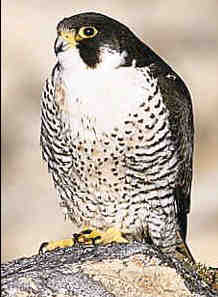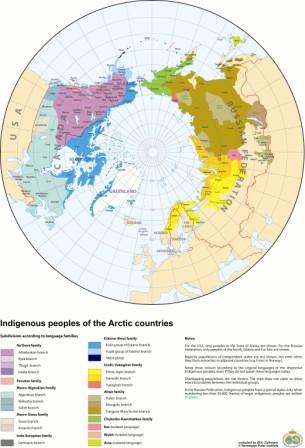
Welcome to ArcticWorld
The word “arctic” is derived from the Greek word arktikos, which means “near the bear,” in reference to the constellation known as Ursa Major, or the Big Dipper. The two stars on the end of the Big Dipper point to Polaris, or the North Star.
The Arctic is the polar region north of the Arctic Circle, or north of the latitude 66° 33’ 44” (or 66.5622°) north of the equator. During the June solstice, there are 24 hours of sunlight in the Arctic and on the December solstice, the sun never rises. The eight countries of Finland, Sweden, Norway, Iceland, Greenland (under the Danish monarchy), Canada, the United States (Alaska) and Russia make up the Arctic. Temperatures average -40°C or -40°F in the winter and under 10°C, or 50°F, in the summer.
The arctic region of the world is the northernmost area of the world covering approximately 14.5 million square kilometers (5.5 million square miles) and is described three ways. One definition of the arctic is any land north of the Arctic Circle, which is the latitude of 66° 33’ 44” (or 66.5622°). Arctic researchers define it as any land north of the growth of upright trees. Another research definition of the arctic is areas of high latitude where the average daily temperature on southern exposures doesn’t rise above 10°C (50°F). You can see a map of these three definitions of the arctic,below, courtesy of the National Snow and Ice Data Center (NSIDC) at http://nsidc.org/cryosphere/arctic-meteorology/arctic.html.
The Arctic Ocean dominates the arctic region. This ocean covers 15,558,000 square kilometers (6,006,977 square miles). Parts of the countries of the United States (Alaska), Canada, Greenland, Iceland, Norway, Sweden, Finland and Russia make up land of the Arctic, which is treeless permafrost.
The expression “arctic” comes from the Greek word arktikos, which literally means “of the bear.” Ursa Major, also known as the Great Bear constellation, or the Big Dipper, has two outermost stars that point to Polaris, or the North Star, which is the end of the tail of Ursa Minor, or the Little Bear constellation.
 Arctic temperatures range from an average winter value of -40°C (-40°F) to an average summer temperature just under 10°C (50°F). The coldest recorded arctic temperature is -68°C (-90.4°F) in Oymyakon, Siberia, Russia on 6 February 1933 and in Verkhoyansk, Siberia, Russia on 3 January 1885. That’s not the coldest temperature in the world, which goes to Vostok Station of Antarctica, on the opposite end of the globe, with a -89.2°C (-128.6°F) recording. The record high arctic temperature was at Ft. Yukon, Alaska with 38°C (100°F) set on 27 June 1915.
Arctic temperatures range from an average winter value of -40°C (-40°F) to an average summer temperature just under 10°C (50°F). The coldest recorded arctic temperature is -68°C (-90.4°F) in Oymyakon, Siberia, Russia on 6 February 1933 and in Verkhoyansk, Siberia, Russia on 3 January 1885. That’s not the coldest temperature in the world, which goes to Vostok Station of Antarctica, on the opposite end of the globe, with a -89.2°C (-128.6°F) recording. The record high arctic temperature was at Ft. Yukon, Alaska with 38°C (100°F) set on 27 June 1915.
Sunrise and sunset at the northern most tip of the globe, the North Pole, doesn’t really happen. Just before the spring equinox, around 20 March, the sun stays on the horizon and is seen all day. The sun is in the sky at the North Pole for 186 days until just after the autumn equinox, when it sets on 24 September and doesn’t rise until 18 March. A common misconception is that the entire arctic is in total darkness throughout the winter. On the shortest day of the year in the northern hemisphere, 22 December, the sun is up at any location on the Arctic Circle for two hours, 11 minutes.
 Plants of the arctic regions include moss, lichen, shrubs and grasses that grow close to the ground. The term for this kind of geography is “tundra.” Beneath the topsoil, the ground is permanently frozen. That’s called permafrost. Summer areas of the tundra above permafrost develop bogs, lakes and marshes, which are ideal for berry shrubs, such as black bearberry and crowberry.
Plants of the arctic regions include moss, lichen, shrubs and grasses that grow close to the ground. The term for this kind of geography is “tundra.” Beneath the topsoil, the ground is permanently frozen. That’s called permafrost. Summer areas of the tundra above permafrost develop bogs, lakes and marshes, which are ideal for berry shrubs, such as black bearberry and crowberry.
Since trees don’t exist in the Arctic, winds pick up to 50-100 km/h (30-60 mph). With snow as precipitation through the long arctic winter and a persistent wind, it seems like it’s continuously snowing in the Arctic. Actually, precipitation levels are similar to a desert, at 15 to 25 centimeters (six to 10 inches) each year. Plus, most of this low level of precipitation falls through the summer months. Water can’t sink through the permafrost, thereby collecting in marshy areas that typify the look of the arctic tundra.
Land animals of the Arctic include lemmings, arctic hare, arctic foxes, wolverines, ermines, arctic ground squirrels, ptarmigan (a grouse-like bird), geese (that nest in summer), caribou, muskoxen and polar bears. Seals and walrus inhabit arctic waters, as do several species of whales and porpoises. Whales that live in the arctic year round include narwhals, beluga and bowhead whales. Visiting summer whales included humpback, grey, minke and killer whales.
Of the approximate 13.1 million people who live in the Artic, some are natives and others are more recent immigrants who mainly hail from Europe. Inupiat and Athabaskan Indians make up about 70 percent of Alaska’s Arctic population. Fifty percent of the Canadian Arctic consists of native populations, which are Métis, Inuit (Inuvialuit) and Athabaskan Indian peoples. The Inuit (Kalaallit) live in Greenland. Saami inhabit the arctic portions of Norway, Sweden and Finland. Of the two million people living in Arctic Russia, only 67,000 are native. Russia’s indigenous arctic populations include Siberian Yup’ik Eskimos, Chukchi, Yukagir, Sakha (Yakut), Even, Evenk, Dolgan, Nganasan, Ket, Enets, Selkup, Nenets, Khanty, Izhma-Komi, Saami and Vepsians. View a map of arctic indigenous peoples at http://ansipra.npolar.no/image/Arctic04E.jpg.

Large portions of the Arctic hold underground reserves of oil and gas. Coal is another non-renewable arctic resource. Increasing meltdown of summer polar ice in the Arctic Ocean is giving petroleum exploration of the Arctic a more probable possibility for nations of this region of the world.
Water is the Arctic’s biggest resource. Twenty percent of all water of the earth is tied up in arctic ice and glaciers. Global warming shows significantly faster results in the Arctic, where scientists see substantial permanent sea ice shrinkage and estimate its total elimination by September as early as 2040. Melting ice floating on the Arctic Ocean won’t raise sea levels. But, if glaciers on land, such as in Greenland, melt, then it would lead to big increases in the worldwide sea level and a shrinkage of coastal land throughout the earth.
Worldwide pollution is a concern for the fragile arctic environment. Sea and air streams at times transport pollutants into arctic regions to create a circumstance known as arctic haze, a red/brown springtime sky that can persist for a month in the northern atmosphere. In 1972, Dr. Glenn Shaw from the University of Alaska Fairbanks’ Geophysical Institute attributed arctic haze to contaminants, such as carbon and sulfur from coal-burning power plants in northerly parts of Asia, that float in the air for thousands of miles. Today, scientists expect arctic haze to increase daily arctic temperatures by 3°C (5.4°F) by the end of the 21st century, which would contribute significantly to an arctic ice meltdown.

